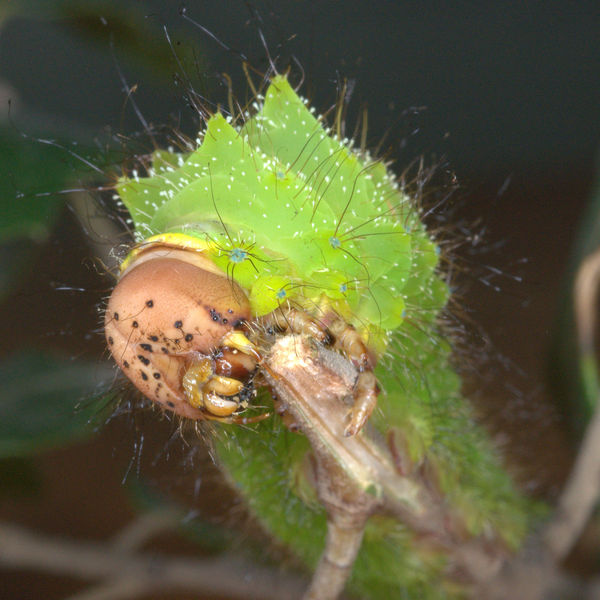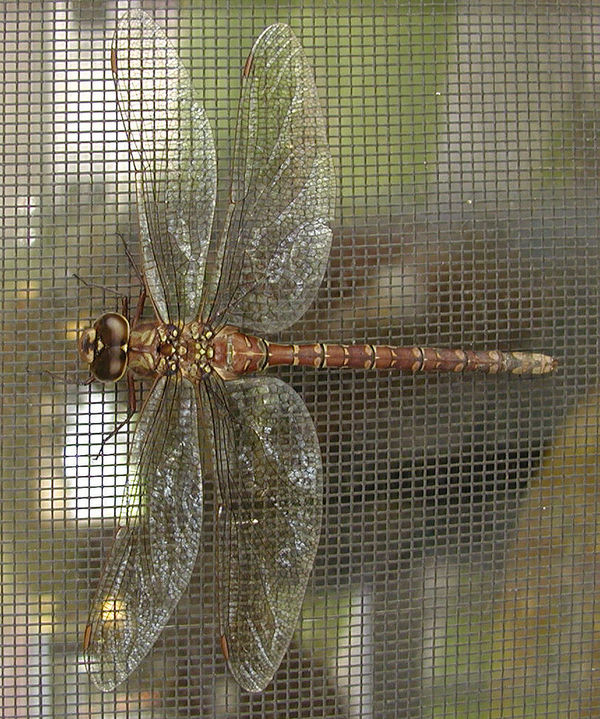Please explain difference in Micro, Macro and telephoto
Sep 29, 2011 21:37:33 #
I am reading through Bryan Peterson's Learning to See Creatively.
I thought I knew what the terms Micro and Macro mean, but I am confused now when you are talking lens what is the difference between a Micro, Macro or Telephoto lens. He talks about his Nikkor 70-180mm micro lens and is taking extreme close ups. later he talks about zooming his macro lens to 160mm and is taking a photo of parakeets. I have a nikkor 100mm to 300mm lens and thought it was a telephoto lens. I also have my kit lens that is 28mm to 50mm. Can someone explain this to me.
Thank you.
I thought I knew what the terms Micro and Macro mean, but I am confused now when you are talking lens what is the difference between a Micro, Macro or Telephoto lens. He talks about his Nikkor 70-180mm micro lens and is taking extreme close ups. later he talks about zooming his macro lens to 160mm and is taking a photo of parakeets. I have a nikkor 100mm to 300mm lens and thought it was a telephoto lens. I also have my kit lens that is 28mm to 50mm. Can someone explain this to me.
Thank you.
Sep 29, 2011 23:21:13 #
Hi, macro and micro are the same, in the truest form this kind of photography is taken by what is called a macro or micro lens, these lenses allow you to get within inches of your subject and gives a 1:1 magnification, which if I understand correctly what you see is the actual size being photographed. A macro or micro lens is 1 focal length for example Nikons top macro lens is called AF-S VR Micro-Nikkor 105mm f/2.8G IF-ED lens. Notice the term micro in that name. Canon uses the word macro in their lens description.
Telephoto is a lens of longer focal length used to bring objects that at are a distance closer, you generally cannot get close to your subject like you can with a macro lens. I have a 70-300 telephoto zoom lens, but in order for me to get a subject in focus i have to be at least a yard or more away. Macro or micro lenses picture quality can be truly excellent, providing tack sharp images, and are great for subjects with fine detail, insects are one of the most photographed with macro lenses, these lenses are also often used for portraits, but i have read where some feel they are too sharp for facial portraits, but todays software can often resolve this, if you wish to soften a portrait.
Telephoto is a lens of longer focal length used to bring objects that at are a distance closer, you generally cannot get close to your subject like you can with a macro lens. I have a 70-300 telephoto zoom lens, but in order for me to get a subject in focus i have to be at least a yard or more away. Macro or micro lenses picture quality can be truly excellent, providing tack sharp images, and are great for subjects with fine detail, insects are one of the most photographed with macro lenses, these lenses are also often used for portraits, but i have read where some feel they are too sharp for facial portraits, but todays software can often resolve this, if you wish to soften a portrait.
Sep 30, 2011 02:07:19 #
Technically, Micro-Photography is 10x (10:1) or higher magnification. Usually a microscope is involved. Nikon has diluted this strict interpretation by labeling all of their macro lenses as "Micro".
Technically, Macro-Photography is life-size (1:1), up to 10x life-size (10:1) magnification. Unfortunately, this term has been diluted by over use with less than life-size photography. Macro lenses are designed to focus on subjects quite close to front lens, usually up to 1:1 magnification. Extension tubes are used to increase magnification to camera sensor. Post-photography cropping can further increase magnification.
Traditionally, close-up photography is approximately 1/4-life size (1:4) up to near life-size. Too many photographers mis-label close-up photography as macro-photography.
As an Ophthalmic Diagnostic Technician & Medical Photographer, I am quite familiar with all three categories of above photography.
A telephoto lens is designed to photograph a distant subject to make it look much closer. Telephoto lenses usually cannot focus on near subjects.
Technically, Macro-Photography is life-size (1:1), up to 10x life-size (10:1) magnification. Unfortunately, this term has been diluted by over use with less than life-size photography. Macro lenses are designed to focus on subjects quite close to front lens, usually up to 1:1 magnification. Extension tubes are used to increase magnification to camera sensor. Post-photography cropping can further increase magnification.
Traditionally, close-up photography is approximately 1/4-life size (1:4) up to near life-size. Too many photographers mis-label close-up photography as macro-photography.
As an Ophthalmic Diagnostic Technician & Medical Photographer, I am quite familiar with all three categories of above photography.
A telephoto lens is designed to photograph a distant subject to make it look much closer. Telephoto lenses usually cannot focus on near subjects.
Typical life-size (1:1) photograph with a true macro lens

Sep 30, 2011 07:08:50 #
Ok I get it now. I was getting so confused. So if it is a micro or macro lens it will state that on the lens.
And you need a macro or micro lens to do macro or micro photography.
Thank you both for clearing that up.
And you need a macro or micro lens to do macro or micro photography.
Thank you both for clearing that up.
Sep 30, 2011 14:53:27 #
Ron Of TN
Loc: Middle Tenn
Country's Mama wrote:
Ok I get it now. I was getting so confused. So if it is a micro or macro lens it will state that on the lens.
And you need a macro or micro lens to do macro or micro photography.
Thank you both for clearing that up.
And you need a macro or micro lens to do macro or micro photography.
Thank you both for clearing that up.
You really don't need a macro/micro lens to make close-up photos.
My camera is the Nikon Coolpix 8800 which does not accept interchangeable lenses, but does accept filters. So, I attach a Canon 250D close up lens for macro photos. When I did film photography, I used a Nikon T5 or T6 close up lens attached to the end of an 80mm to 200mm zoom lens.
Using this method eliminates the cost of another expensive lens and lessens the weight of your camera bag.
One other possibility, which I have used, is to attach a reversed 28mm lens to the end of a 200mm lens - using a step-up ring between the two lenses.
Sep 30, 2011 16:57:31 #
Ron Of TN wrote:
You really don't need a macro/micro lens to make c... (show quote)
That was not OP's question. Basic questions were asked and answered.
An advance macro-photographer can get as complicated as they wish. I have reverse-mounted standard lenses directly to a camera body, reverse-mounted a standard lens to another lens, used extension tubes, reverse-mounted CCTV lenses, used bellows, and macro rails. Each set-up has its advantage, and each has severe disadvantages. No contrived combination comes close to results of a purpose-built, flat-field, quality macro lens, with or without extension tubes.
Oct 1, 2011 02:50:11 #
Ron Of TN
Loc: Middle Tenn
Nikonian72 wrote:
That was not OP's question. Basic questions were asked and answered.
I didn't intend to answer OP's questions since they had been answered.
I was responding to OP's following statement.
"And you need a macro or micro lens to do macro or micro photography."
That was not OP's question. Basic questions were asked and answered.
I didn't intend to answer OP's questions since they had been answered.
I was responding to OP's following statement.
"And you need a macro or micro lens to do macro or micro photography."
Oct 2, 2011 06:05:06 #
My Olympus 2100 UZ is fine for both telephoto as well as macro shots. Harold bigharry31@gmail.com

Oct 2, 2011 21:38:19 #
bigharry31 wrote:
My Olympus 2100 UZ is fine for both telephoto as well as macro shots. Harold bigharry31@gmail.com
I really like this dragonfly on the screen shot.
Oct 2, 2011 22:35:36 #
bigharry31 wrote:
My Olympus 2100 UZ is fine for both telephoto as well as macro shots.
Your dragonfly photo is NOT a macro-photograph. It is a close-up photo. A macro image would be life size (1:1) on your camera sensor. The Olympus 2100UZ CCD is 6.4-mm x 4.8-mm in size: http://www.dpreview.com/products/olympus/compacts/oly_c2100uz Your dragonfly is approximately 100-mm wingtip-to-wingtip, with body approx 80-mm long. A macro of your dragonfly would be head only size.
Oct 3, 2011 09:13:50 #
Bit by bit I am starting to catch on to this. Thank you Nikonian for your explanations.
Oct 3, 2011 09:25:09 #
Nikonian72 wrote:
Technically, Micro-Photography is 10x (10:1) or hi... (show quote)
WOW, that thing looks intimidating. Love it!
Oct 3, 2011 09:26:27 #
Nikonian72 wrote:
Technically, Micro-Photography is 10x (10:1) or hi... (show quote)
Here here. Thank you for a cogent response. Just a reminder that companies use various terms without regard for what those terms really mean so before you buy anything, make sure it is what you want.
Oct 3, 2011 12:09:26 #
My friend here used my Olypus to get the dragonfly. The Olympus has a button to push for very close shots. The megapixels are not high compared to newer cameras but it has a great lens, all made in Japan. Harold
Oct 3, 2011 13:15:02 #
bigharry31 wrote:
My friend here used my Olypus to get the dragonfly. The Olympus has a button to push for very close shots. The megapixels are not high compared to newer cameras but it has a great lens, all made in Japan. Harold
"Close" is correct. Not the same as macro.
If you want to reply, then register here. Registration is free and your account is created instantly, so you can post right away.




